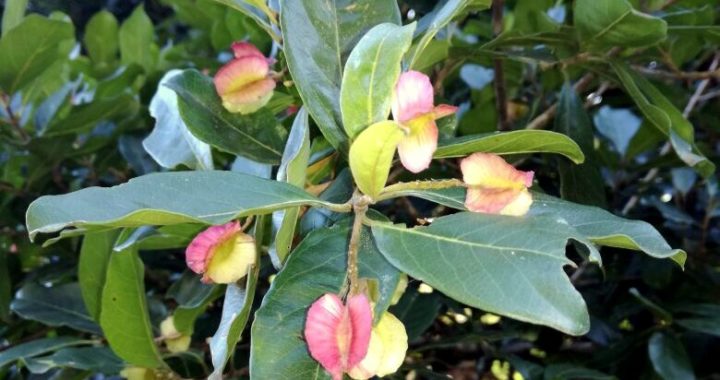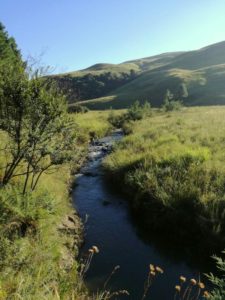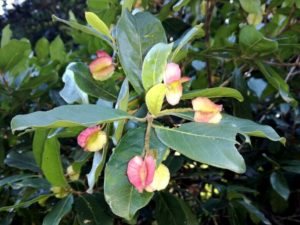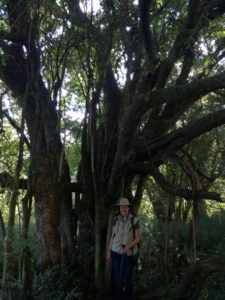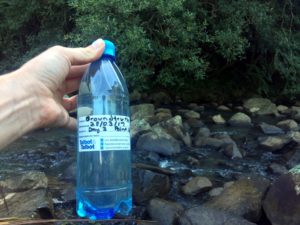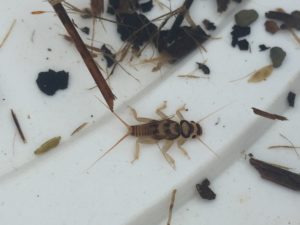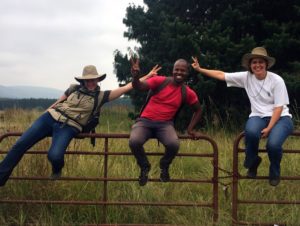On Tuesday 28 March, as we reached our drop off point for day 3, courtesy of C. MacGillivray’s Karkloof Taxi Services, Sue Viljoen (WWF-SA) remarked that she was in need of a double espresso and a red bull. Yip, the typical day 3 stiffness had set in, and our bodies were yelling for more sleep and wondering why on earth we had volunteered to walk from dawn to dusk through some rather difficult terrain. Once we were on our way, with the morning mist rising and the river looking really beautiful, we soon forgot our morning blues.
A hidden gem was waiting for us a few river bends later. Grassy river banks suddenly gave way to a small pocket of riverine forest and invited us in to explore. If we did not have at least another 10km to conquer that day, we would have loved to linger under that quiet, shady tree canopy created by some impressively tall forest trees, including Sue’s new favourite – The Forest Bushwillow (Combretum kraussii).
We wondered how old this particular bushwillow was – maybe a good 50 to 90 years?
However the fantastical forest patches were soon forgotten when we saw the sad sight of green algae in a slow moving section of the river, a sure sign of nutrient enrichment.
When we stopped at the next suitable place to take water quality samples, the mini-SASS result reflected a decline in river health.
From this point on, the condition of the river bank vegetation also declined considerably with a proliferation of alien invasive vegetation, particularly bramble, which required frequent bushwhacking and made walking close to the river very difficult. We had to take a number of detours around or through plantations and lost sight of the river for a fair distance, often due to a hedge-like wall of bramble that separated us from the river.
We also came across 2 large areas of erosion on exposed, steep river banks.
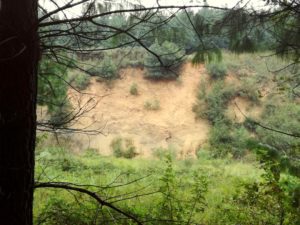
Riverbank erosion causes increased sediment deposit in rivers during rainy and stormy weather which leads to the silting up of rivers and dams.
While gazing at the extent of the erosion, a bushbuck suddenly bolted out and made a quick disappearance again. What a treat to see one of these shy antelope! Another boost to our spirits was coming across a few more forest patches with giant-size Bushwillows, Cape Chestnuts and Cabbage Trees.
Three noteworthy sightings from today can adequately be summed up as – The Good, The Bad and the Ugly.
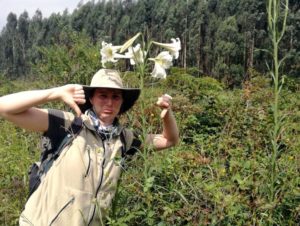
The Bad – Formosa Lilies (Lilium formosanum) an emerging weed, which despite its aesthetic appeal is spreading rampantly.
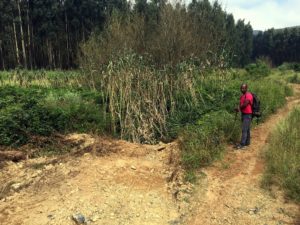
The Ugly – Bulldozer activity, altering the river banks and clearing vegetation. Such disturbance is likely to attract more invasive weeds.
When we finally got back to the river’s edge and put some of the more difficult terrain behind us, we came to one of the five fixed sampling points where water quality and river flow is sampled weekly by GroundTruth. This is part of a river monitoring project for the Karkloof Irrigation Board, funded by WWF-SA, along the Karkloof and Kusane Rivers. We were encouraged to find a stonefly at this site, doing a fine display of “push-ups” for us, whereby it pushes its body up and down with its legs which is one of the distinguishing features of stoneflies compared to other aquatic invertebrates.
Seeing time fly by, we had to press on to try reach the pick up point before dusk. A new landscape lay before us of beef grazing peacefully on rolling hillsides, maize lands and lush dairy pastures. The change in land use was also coupled with a change in river characteristics, as the river flow slowed down over flatter floodplain terrain, and began to meander more and more.
After a long day, seeing our trusty steed comes into view (a certain white Prado) was truly a welcome sight – and one which deserved a silly photo to celebrate!

